


The World Cup kicked off on November 21, 2022. The final will be held at 18:00 on December 18, local time, and the whole competition will last for 28 days.

According to the sports media Front Office Sports, in order to prepare for the World Cup at the end of 2022, Qatar is expected to invest a budget of 220 billion dollars (including hotels, underground transportation, stadiums, airports and other facilities), which can be said to be a national effort to prepare for this grand event.
In contrast, the 2014 Brazil World Cup cost only $11.5 billion, and the 2018 Russia World Cup cost only $14 billion, so it is also known as the most expensive World Cup in history.
Of the 8 stadiums invested in this World Cup, 7 are newly built, and the other one is a large-scale renovation project. You must be curious about such a large country.

Qatar, a small country with a population of less than 3 million, covers an area of only 11500 square kilometers, which is only two thirds of the area of Beijing (16400). Qatar is located in the Arabian Peninsula. Most of its territory is surrounded by the Persian Gulf, bordering Saudi Arabia, and it is one of the six member states of the Gulf.

▲Geographical location of Qatar
However, it has rich oil resources, and its total natural gas reserves rank the third in the world. In 2021, its GDP will total US $179.6 billion, with a per capita GDP of US $68000. The per capita GDP ranks first in the world. Qatar is also considered by the International Monetary Fund as the richest Arab country, claiming that "you can receive money while lying down".

▲What is the humorous interview about the Qatari people on the Internet
The Qatar World Cup is the first time in history that the World Cup was changed to the winter of the Northern Hemisphere. Because of the geographical and climatic environment, most of the country is covered by desert. In June and July, the average temperature in Qatar reached 40 ℃, the extreme temperature reached 49 ℃, and the average monthly precipitation was less than 0.6 mm. In extreme drought, the precipitation was almost zero. Changing to winter is also to avoid the trouble caused by extreme hot weather.
It is a country with a population of less than 3 million that will soon receive millions of fans~
So far, all the venues for the Qatar World Cup have been unveiled, and the design has been completed by the world's top architectural firms. Let's take a look at these eight distinctive courses. Which one do you want to go to most?
01·Russell Stadium - World Cup main stadium
Design: Foster Partners
Opening, Final and Closing Ceremonies
Russell Stadium is the main stadium of the Qatar World Cup, known as the "No. 1 Project" of Qatar. Located 15 kilometers north of Doha, the capital of Qatar, Lusser New Area holds the opening, final and closing ceremonies, including six group matches, one top 16 match, one quarter final, one semi-final and the final.


The venue was designed by Foster Partners, drawing on Arab architecture, and inspired by Islamic date bowls and enamel lanterns, presenting a golden bowl shaped vessel with Middle Eastern style.
The facade has a triangular opening, which visually emphasizes the structure of the bowl through a diagonal network, forming a perforated barrier, providing a cool and filtered mottled light for the inner hall. High performance facade and innovative roof design reduce the energy consumption of the stadium, and outdoor cooling technology can maximize the comfort in the stadium.




The most proud thing is that the Russell Stadium was built by China Railway Construction International Group. The builders adopted a series of advanced technologies and solved a series of major technical problems with BIM technology in the process of steel structure hoisting and external curtain wall installation. The project is the largest and largest professional stadium built overseas by Chinese enterprises so far, and also has the largest span of cable network system of the same type in the world Single building with cable net roof with the largest cantilever distance.





02·AI Thumama Stadium
Design: Ibrahim M Jaidah
Six group matches, one last 16 match and one quarter final
AI Thumama Stadium is located in the south of Doha. The circular stadium is a concrete bowl structure, which can accommodate 40000 people.

The designer's inspiration comes from the white knitted hat named "Gahfiya", which is popular among Arab men and can be worn alone or as the basic layer of the white headdress of "Ghutra/Shemagh" to prevent the headdress from slipping. This headdress can avoid direct sunlight in the desert. It reflects the modern and traditional characteristics of this country. In addition, the entire stadium can also maintain a constant temperature of 18 ℃.
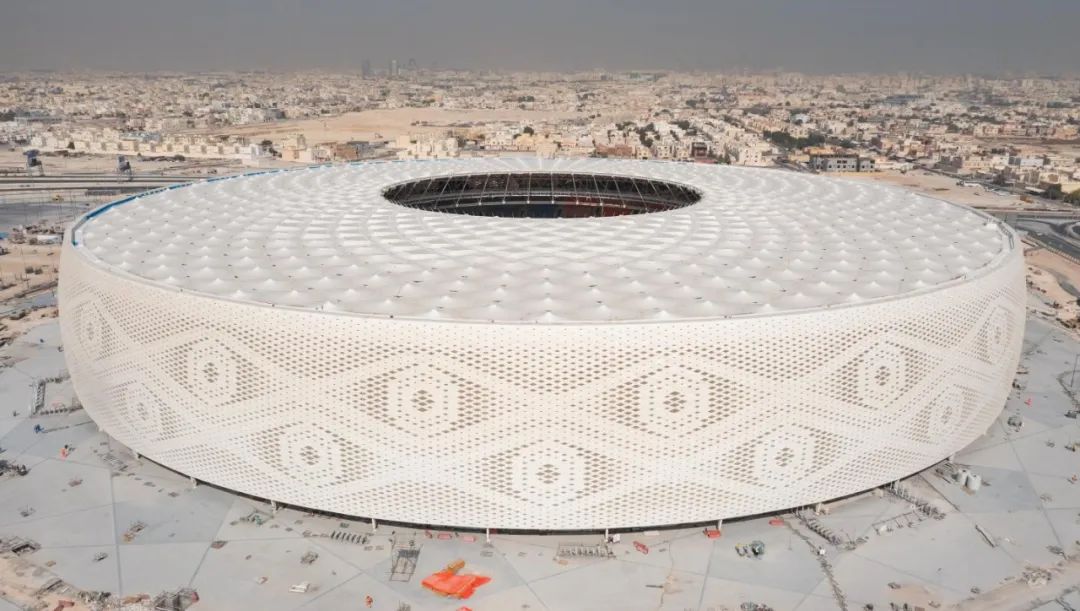

There is no exaggerated curve, the slightly curved facade, and the top of the raised texture make the whole stadium flat. The diamond shaped woven grid naturally becomes the focus of vision at a glance. Seen from a distance, it creates the imagination of "a hat falling gently on the ground". Although the top is flat, it also has texture changes. In a slightly concave rhombic shape, it transits to the bulge of the small body.


03·Arjanub Stadium
Designer: Zaha Architectural Firm、AECOM
Six group matches and one last 16 match
The AI Janoub Stadium, named after the city it built, can accommodate 40000 people. The design of the venue is inspired by the local traditional dhow, which pays tribute to the sailing history of Arjanub. The roof of the gymnasium uses wave patterns, and the interior of the building uses wood, which gives a deep impression to the guests in the gymnasium.



The biggest design highlight of the stadium is its controllable folding roof, which was jointly completed by Zaha Hadid Architects and Schleicher Engineering Design Company of Germany. The roof is covered with folding polytetrafluoroethylene (PTFE) plates and cables. When it is unfolded, it looks like a sail covering the top of the stadium. This design not only integrates the local culture, but also creates a cool environment for the game.





04·974 Gymnasium
Design: Fenwick-Iribarren Architects
Seven matches, including six group matches and one final 16 elimination match
The 974 Stadium is located in Ras Abu Abadi and can accommodate 40000 spectators. Its ingenious idea and arrangement of reusing materials after the competition set a benchmark in the field of building large "green" stadiums.
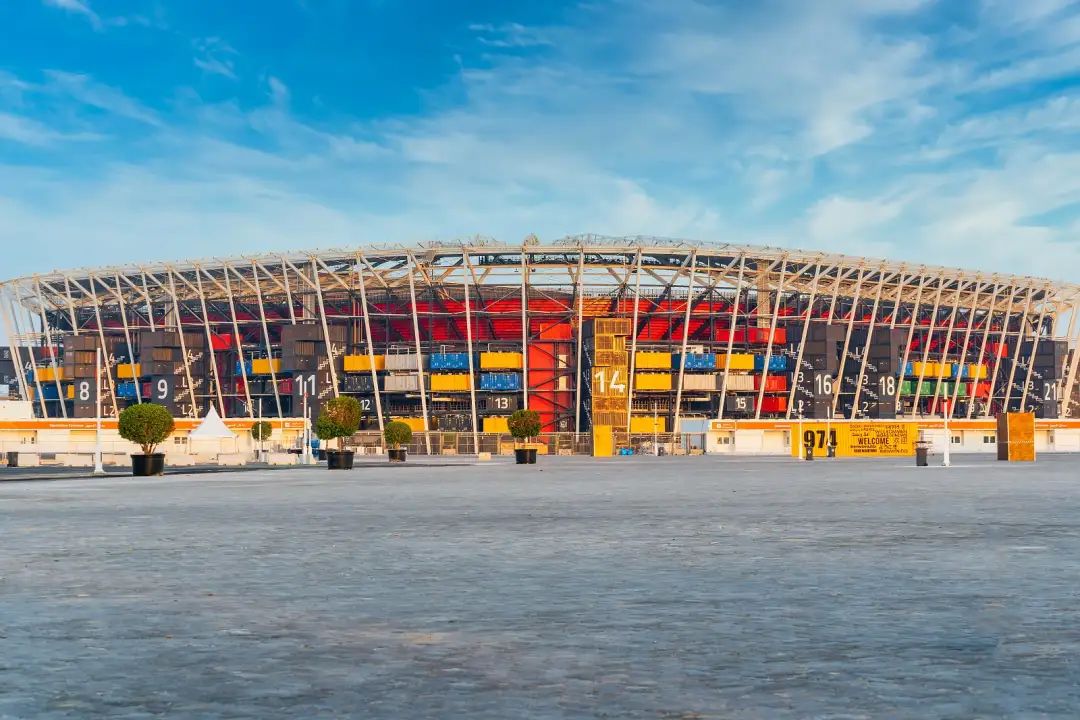

As the first stadium in the history of the World Cup that can be completely disassembled, 974 Stadium is composed of 974 containers. The colorful containers are transformed into spectators' seats, toilets, shops, etc., and then inserted into the main steel structure of the stadium like building blocks. "974" is also the international long-distance telephone area code of Qatar. It is the only seaside site where you can enjoy the magnificent scenery of the Doha skyline.


Each container of the stadium is an assembly module. Removable chairs, snack stalls, toilets, etc. can be pre installed and erected one by one. The modular design also greatly reduces the construction cost, construction time and material waste.
The stadium divides the seats into upper and lower floors. After the World Cup, the seats on the upper floor can be completely removed. The removed containers can be used to build the stadium in other places, and can also be used to build affordable houses.

05· AI Bayt Stadium
Design:Dar AI-Handasa
World Cup opening game, 6 group matches, one last 16 match, one quarter final and one semi-final
AI Bayt Stadium will be used to hold the opening match of this competition. It can be said that this is the first stadium to appear in the World Cup, which can accommodate 60000 people and is equipped with the most advanced retractable roof; Innovative cooling system is set inside, which can reduce the internal temperature of the venue in coordination with the sunshade roof.
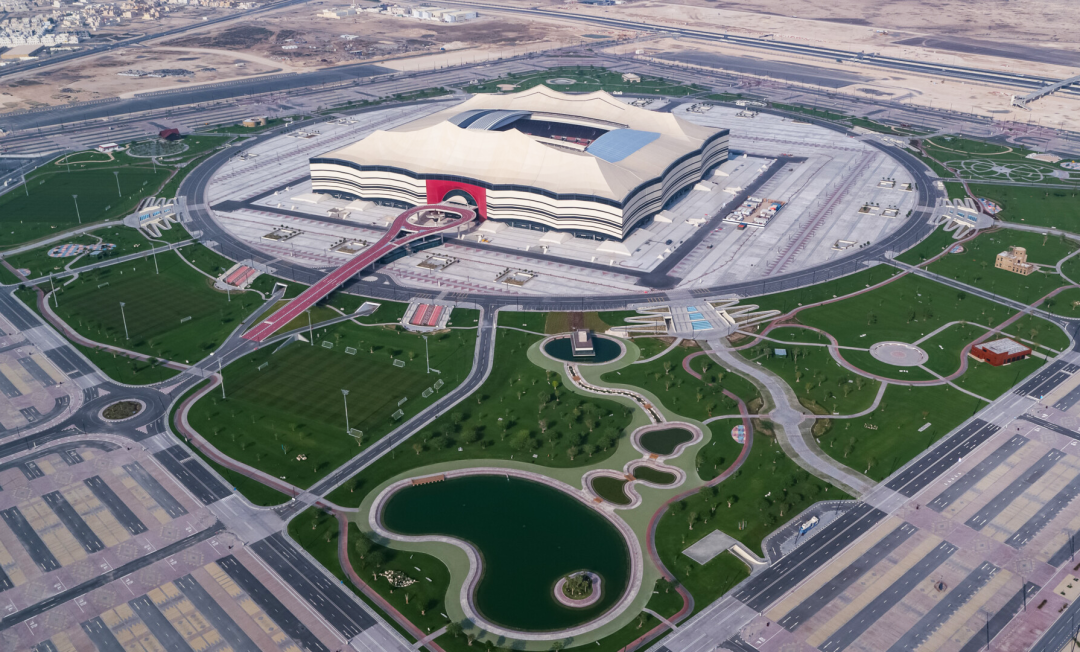

The Albeit Stadium designed by Dar AI Handasah is inspired by the Bayt ai sha'ar tent used by nomadic people in the ancient Middle East, which praises the history of Qatar and its people. "Bedouin" is an Arabic translation, meaning nomads and people who live by water and grass on the wasteland.
The main colors around the building are black and white, showing the black and white tents with Arabic elements. The Qatari style and color are very strong.





06·Harifa International Stadium
Design: Dar AI-Handasa
6 group matches, one top 16 match and 3 or 4 finals
Khalifa International Stadium was built in 1976. It is the national stadium of Qatar and the home of Qatar's national team. It was renovated in 2006. It looks like a half opened shell and adopts a huge arc structure. For this World Cup, the stadium has been renovated, renovated and expanded, adding 12000 seats.

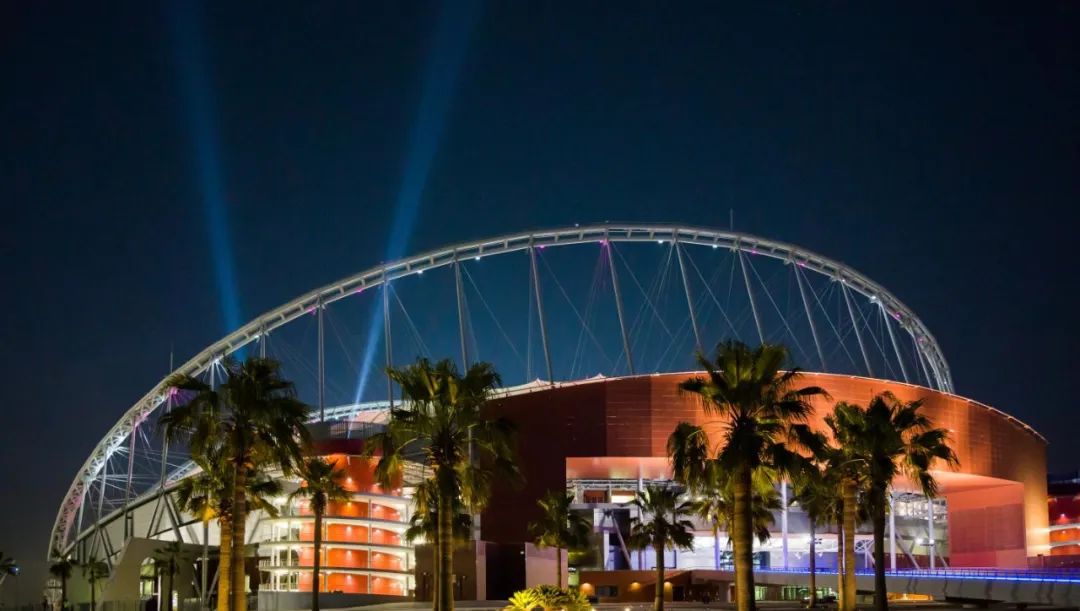
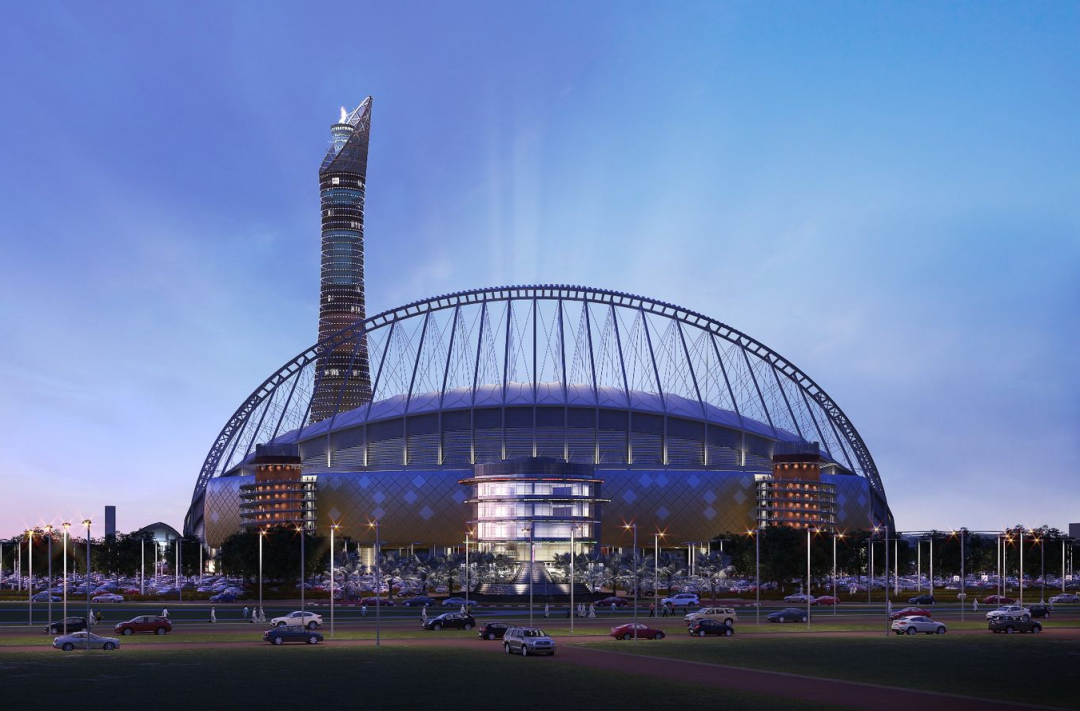

07·Education City Stadium
Designs: Fenwick-Iribarren Architects、Pattern Design
6 group matches, one last 16 match and one quarter final
The Education City Stadium is the first stadium among the World Cup venues to obtain the five-star sustainability rating of the "Global Sustainable Development Assessment System". Inspired by the "diamond", the facade is characterized by triangles. The geometric facade is inlaid with fine workmanship, forming a complex diamond geometric pattern. The color changes with the sun, known as the "diamond in the desert".
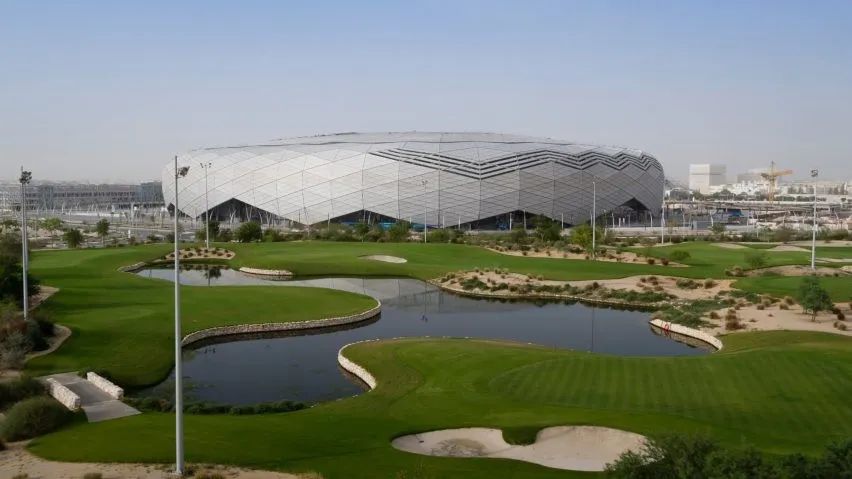



08·Ahmed Ben Ali Stadium
Design: Pattern Design&Ramboll
6 group matches and one top 16 match
Ahmad Bin Ali Stadium is located in Ruiyang and can accommodate 40000 people. Inspired by sand dunes and Islamic architecture, the stadium is surrounded by luminous and color changing multimedia screens. These screens are currently covered with a layer of metal film, which depicts the patterns and patterns common in Qatari architecture.







Of course, in addition to the seven new stadiums, Qatar has also attracted the attention of many design masters. From I.M. Pei to Koolhaas and Nouvel, there are many works of Pritzker Architecture Award winners.
▼Jean Nouvel's "Desert Rose" - Qatar National Museum


▼I.M. Pei's Islamic Art Temple -- Islamic Art Museum


▼OMA——Qatar National Library
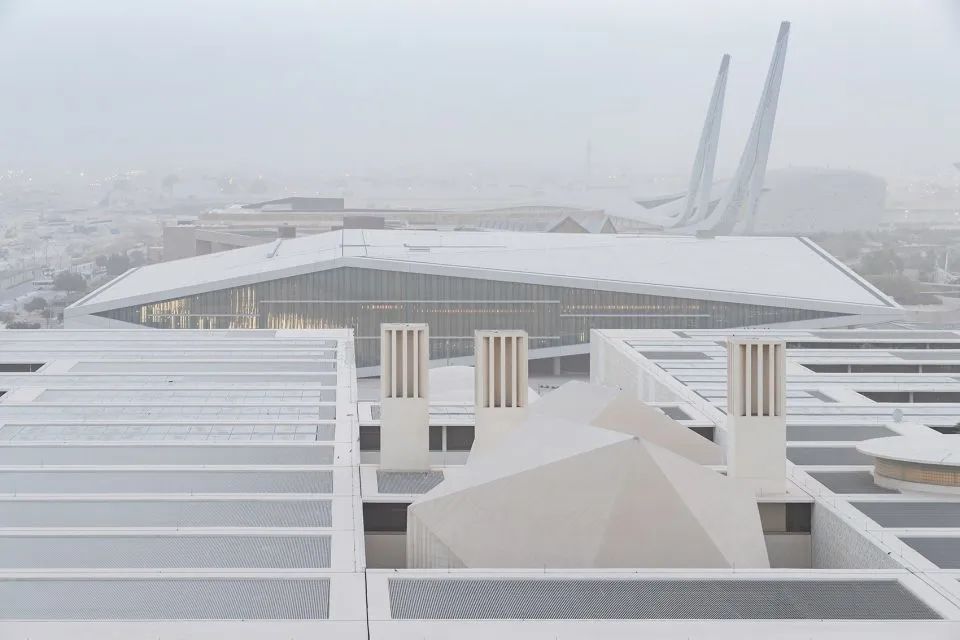

▼Jizaki New Sidra Tree - Qatar National Convention Center
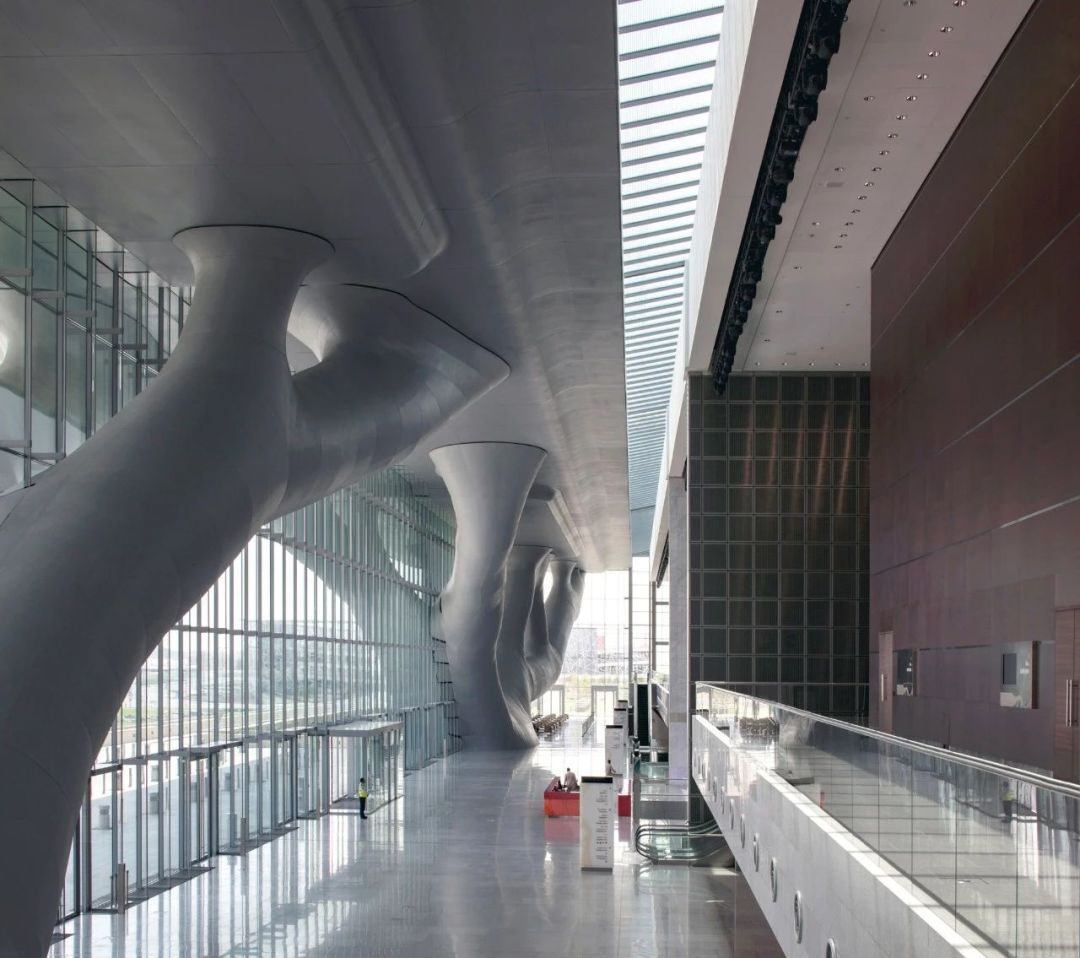

Qatar, as a small country in the Gulf, although its human and land resources are very limited, it has strong economic strength. What surprises will this World Cup bring? Let's wait and see.
Data from design materials